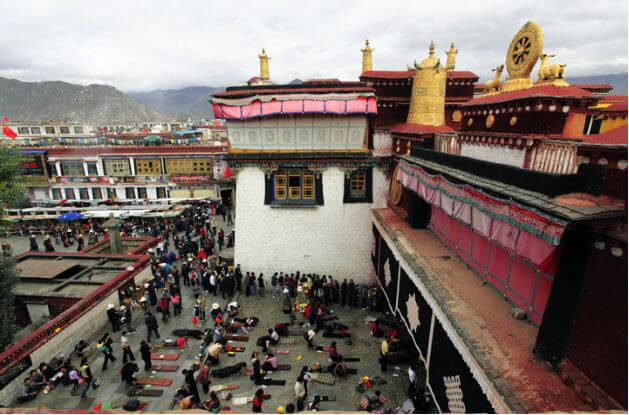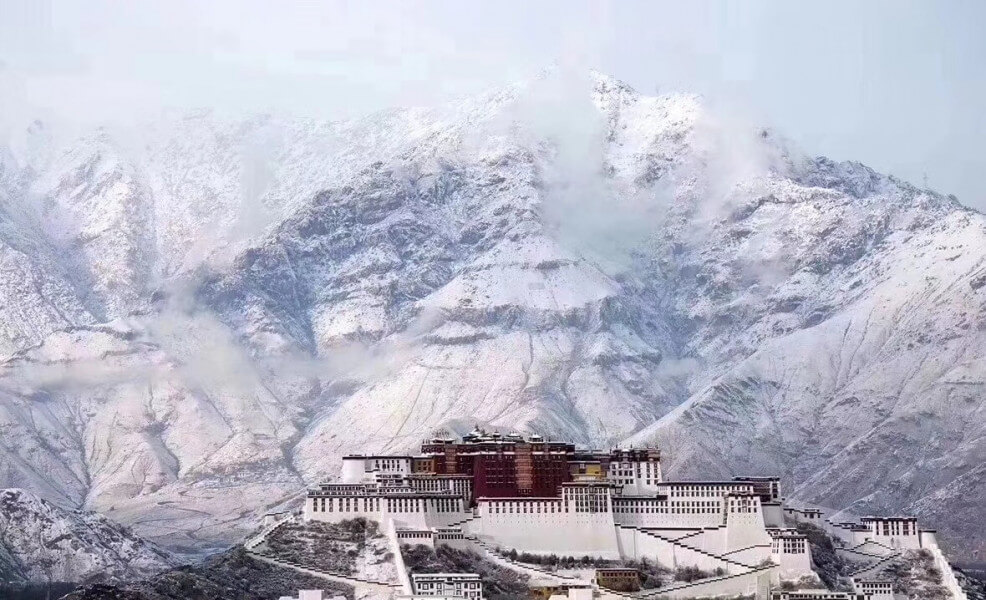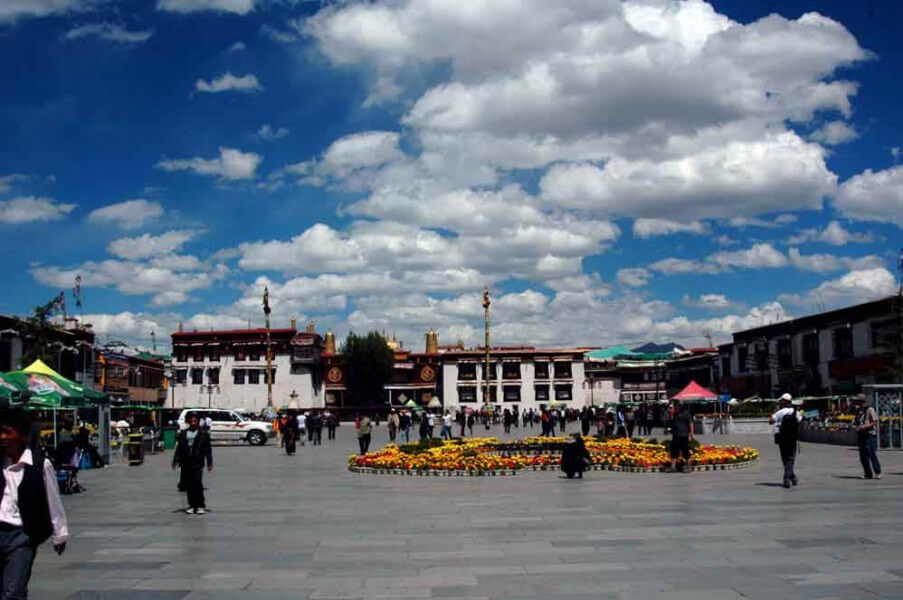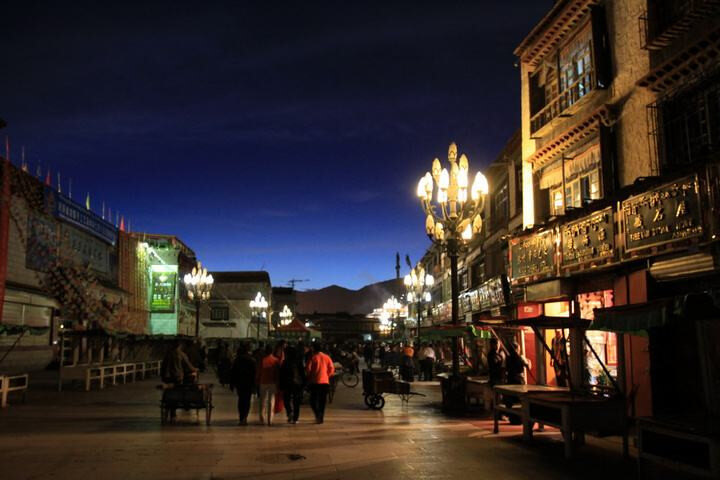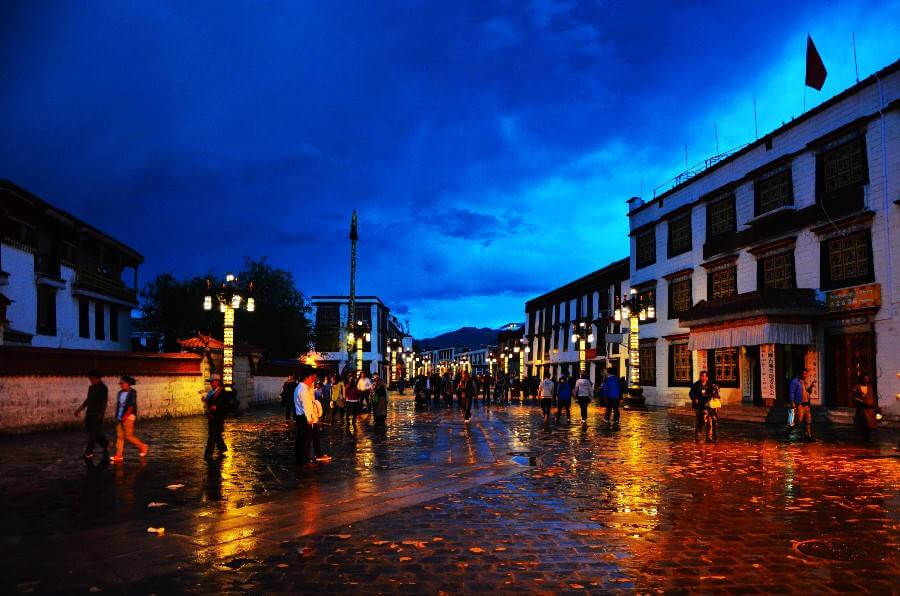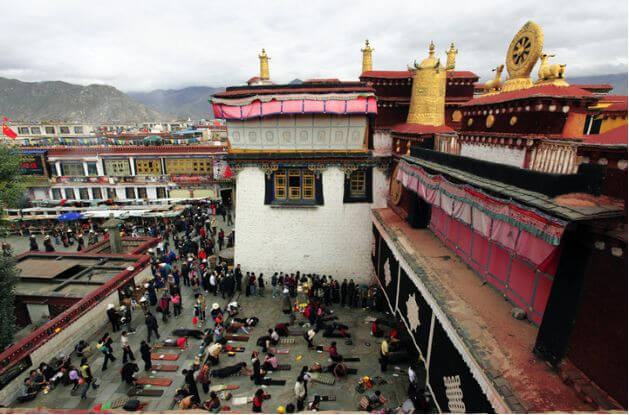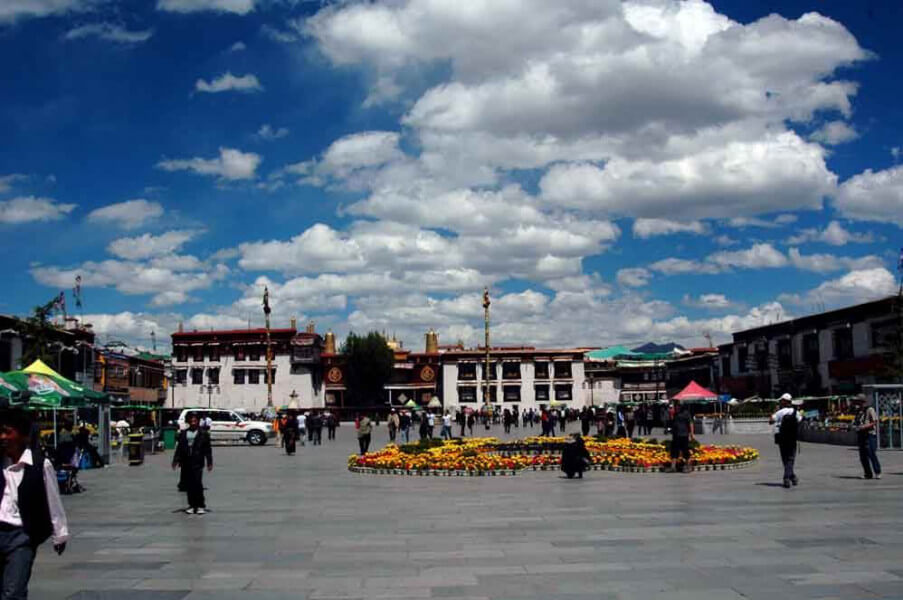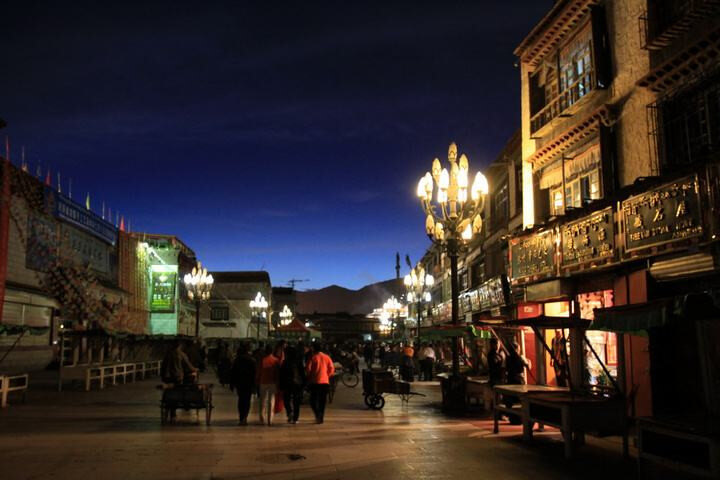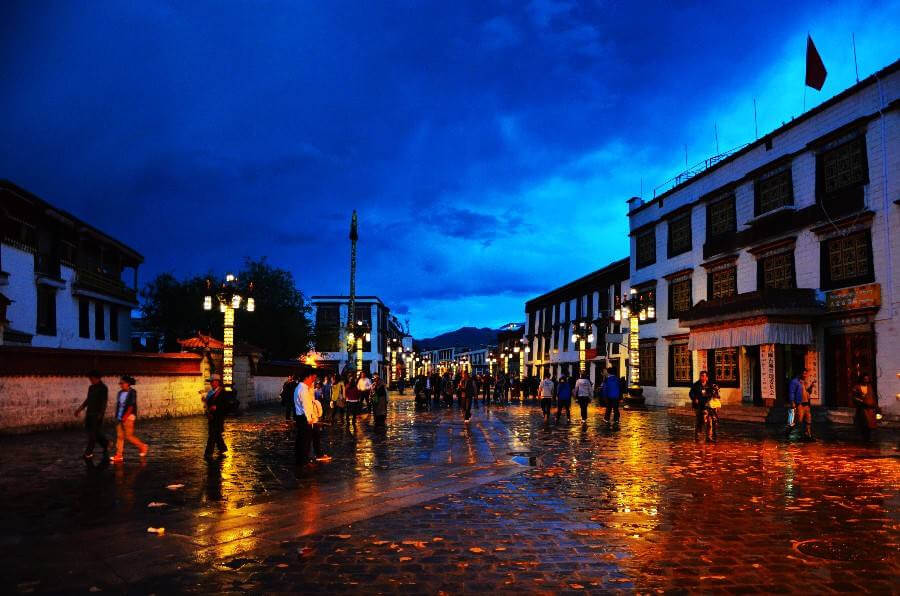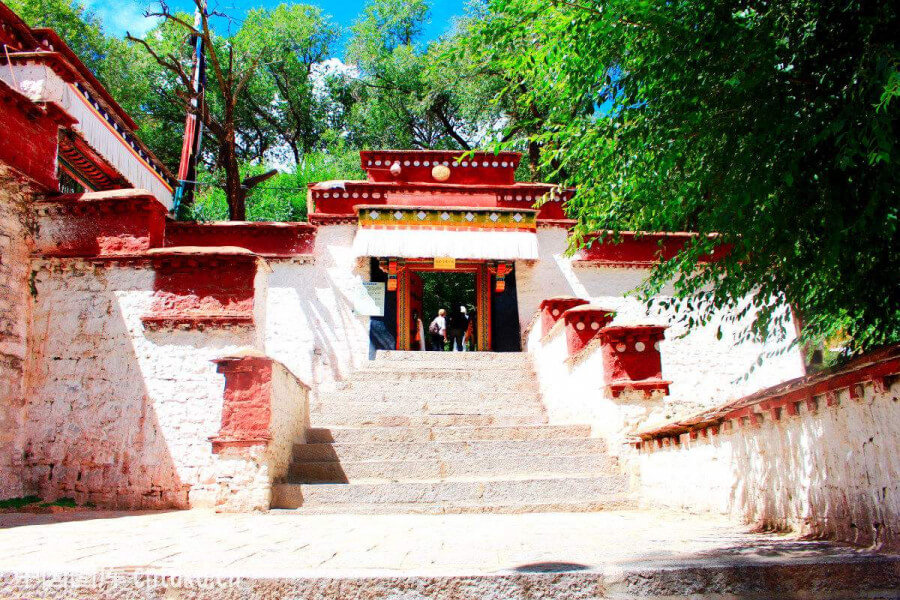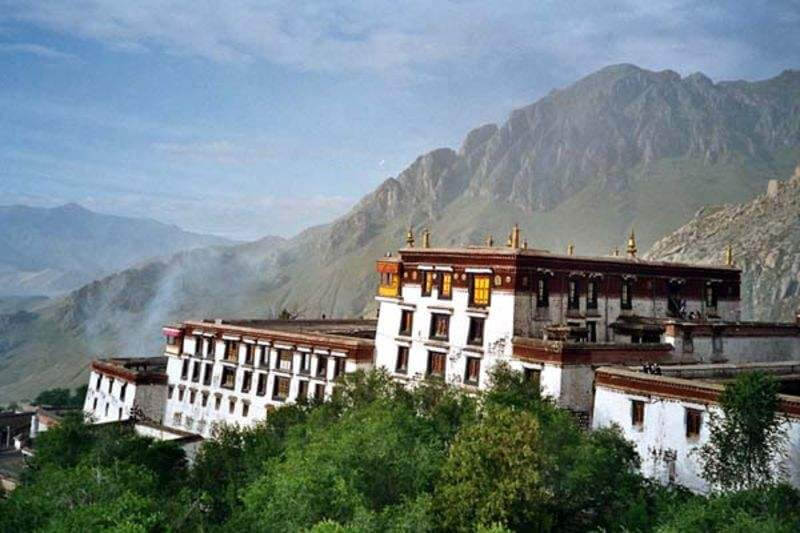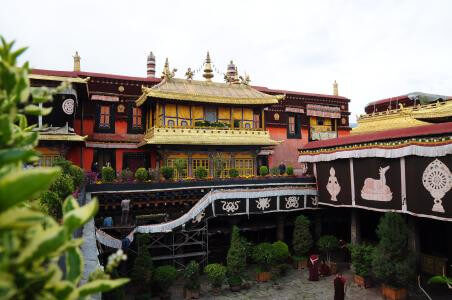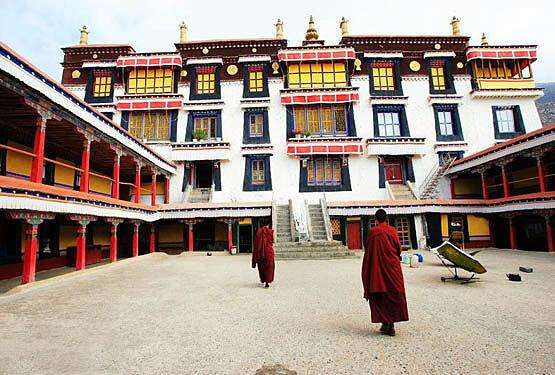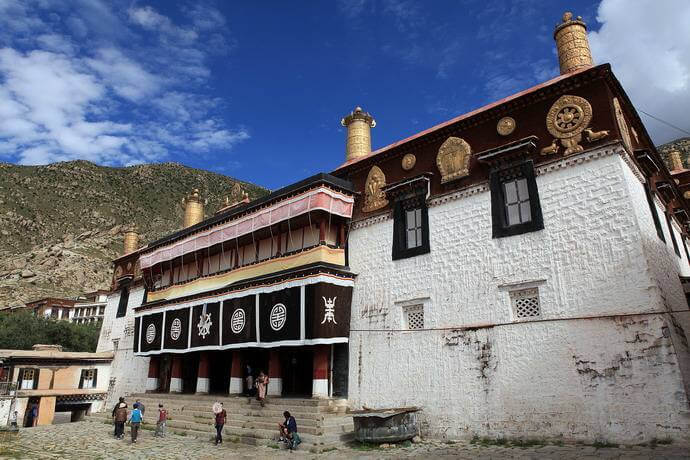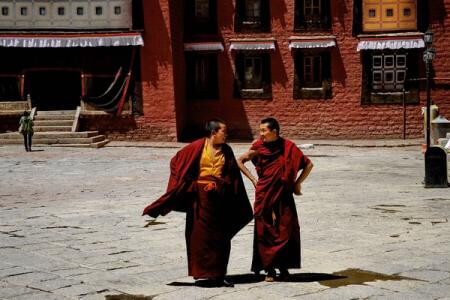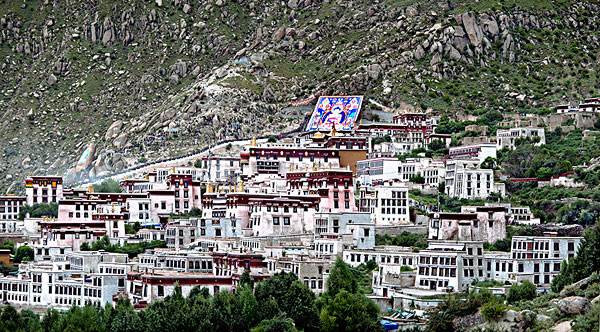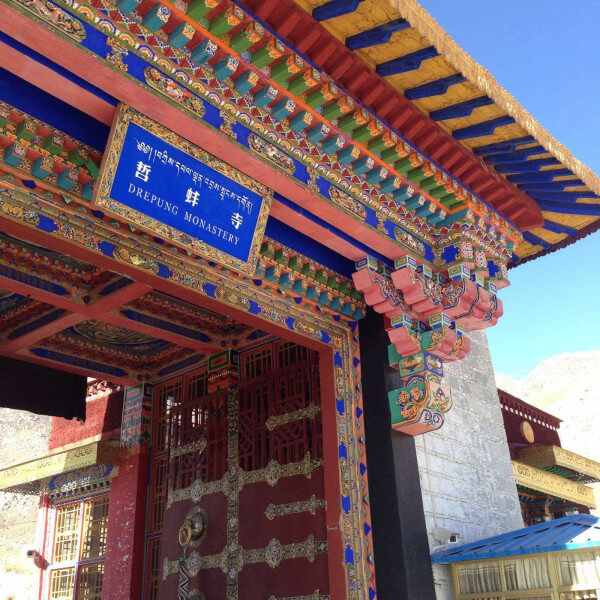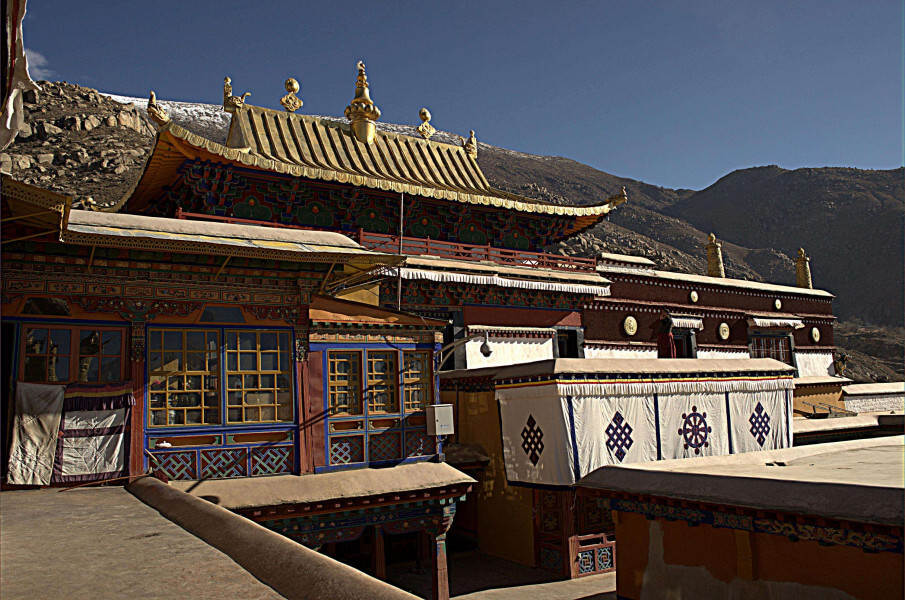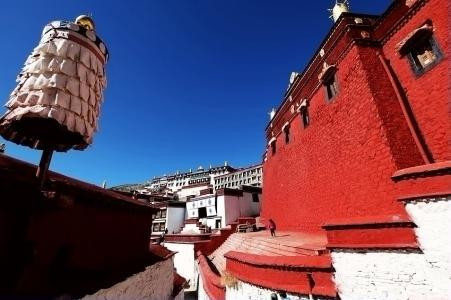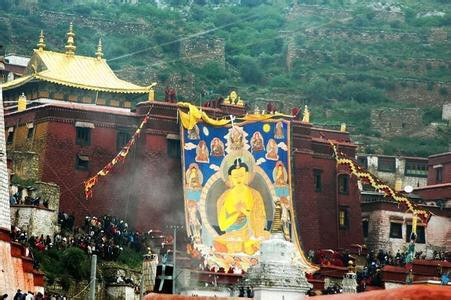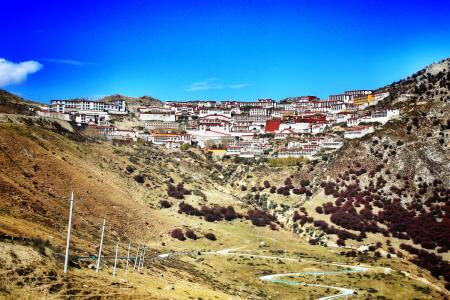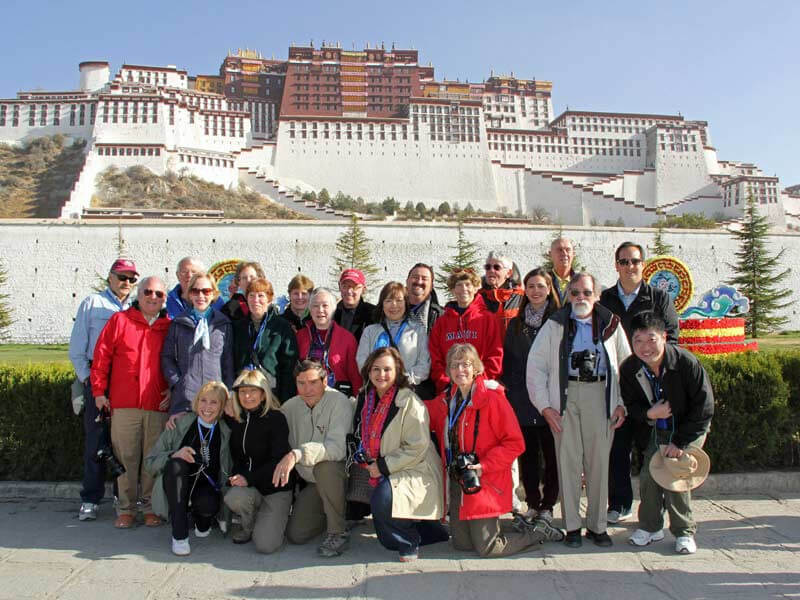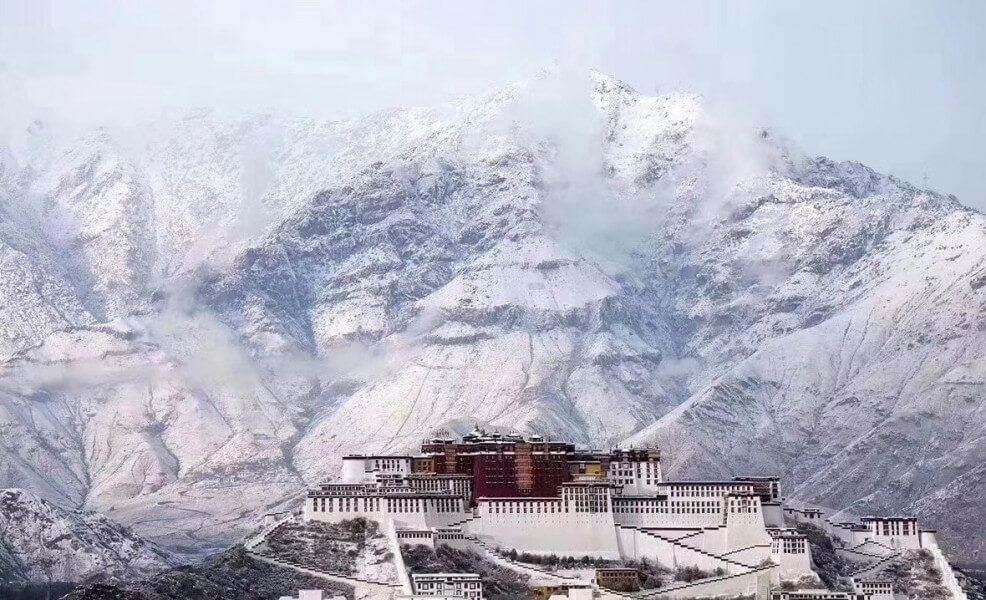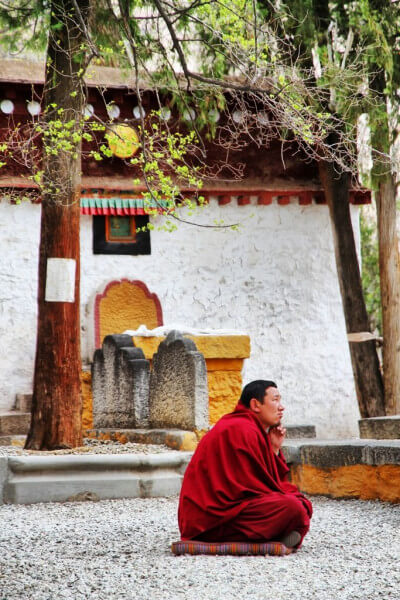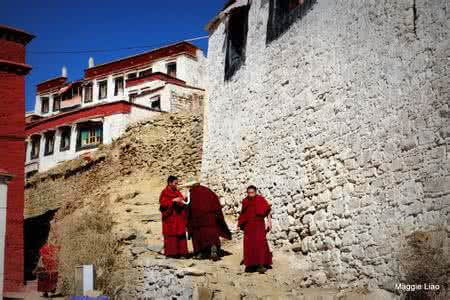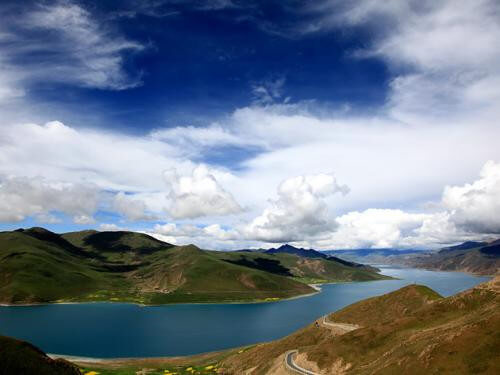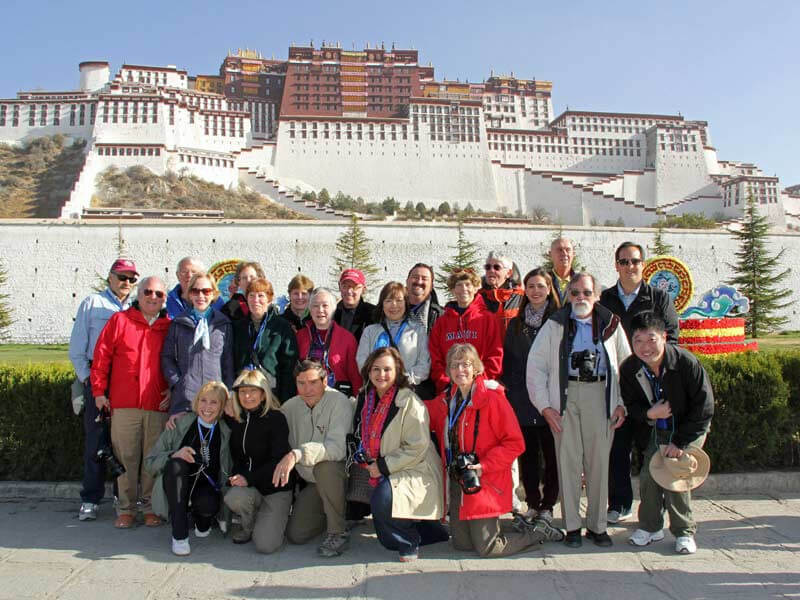After breakfast, travel to Potala Palace which will take you 10 minutes from your hotel. THE POTALA PALACE is considered one of the great wonders of the world. It is held sacred by Tibetans as the former residence of successive Dalai Lamas, and is one of Tibet's most holy pilgrimage sites. A palace was
originally built in the 7 th century by King Songtsen Gampo, and was believed to have been nine stories high, but around the 9th century, it is believed to have been destroyed by a big fire. The present Potala Palace was constructed by the great fifth Dalai Lama in the 17 th century after he became ruler of Tibet. The Potala Palace is divided into two sections, the White Palace (completed in 1653) and Red palace (completed 1694). It has more than one thousand rooms and is thirteen stories high. The White Palace was secular in nature and mainly used for government administration, whilst the Red palace was mainly used for religious functions and still has numerous chapels, including those containing reliquary stupas of the successive Dalai Lamas which are richly decorated in gold, silver and semi-precious stones. Afternoon, visit Jokang temple and Bharkor. JOKANG TEMPLE the Jokang is Tibet’s most sacred temple, the main point of pilgrims from the entire Tibetan plateau. Located at the heart of the ancient town of Lhasa, it was built in the 7 th century by the Tibetan King Songtsen Gampo’s queen Bhrikuti on a site identified by Queen Wencheng according to her geomantic calculation. The temple is 3 stories high and it is constructed with enormous chapels including the most sacred statue of Budhha Shakyamuni, enshrined. It has around 70 monks nowadays. ANCIENT BHARKOR STREET is the most sacred pilgrimage site in Lhasa and it is full of pilgrims from down till dusk. There are four huge prayer flags situated in Bhakor street which surrounds the Jokang, known respectively as Gadhen Dharchen in the northeast, Juyak Dharchen in the west, Kelsang Dharchen in the southwest and SharKyaring Dharchen in the southeast. The Bharkor street is the most active market in all Tibet and it is possible to purchase traditional Tibetan artifacts, religious implements, antiques, modern goods, books, music, clothing, spices, fresh meat and vegetable.
Read more
Tibet Heritage

